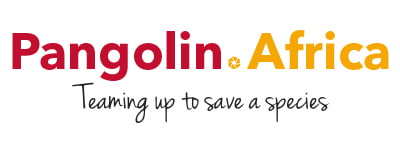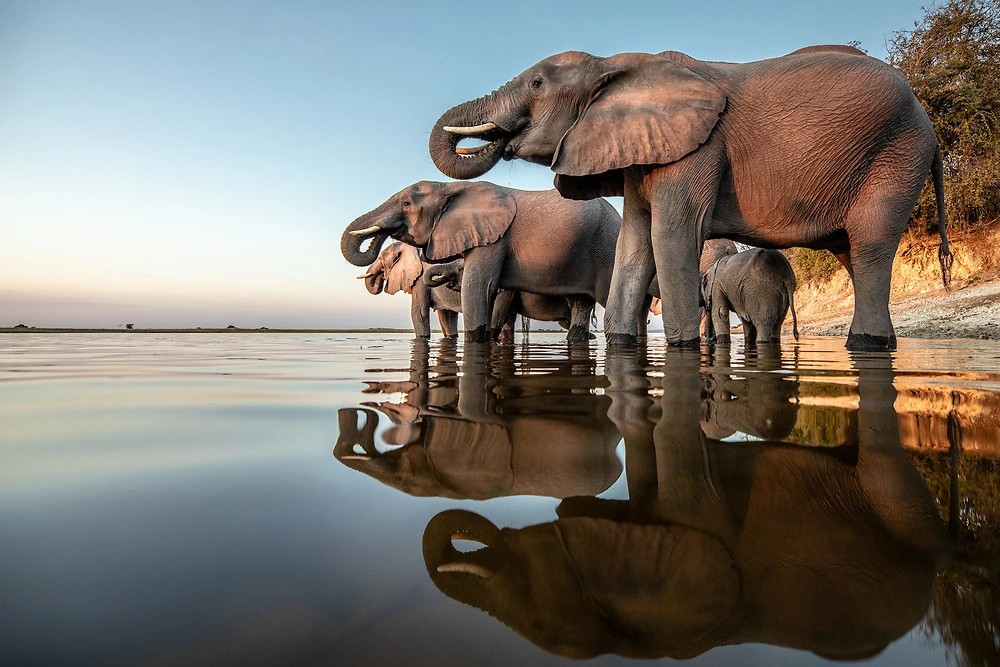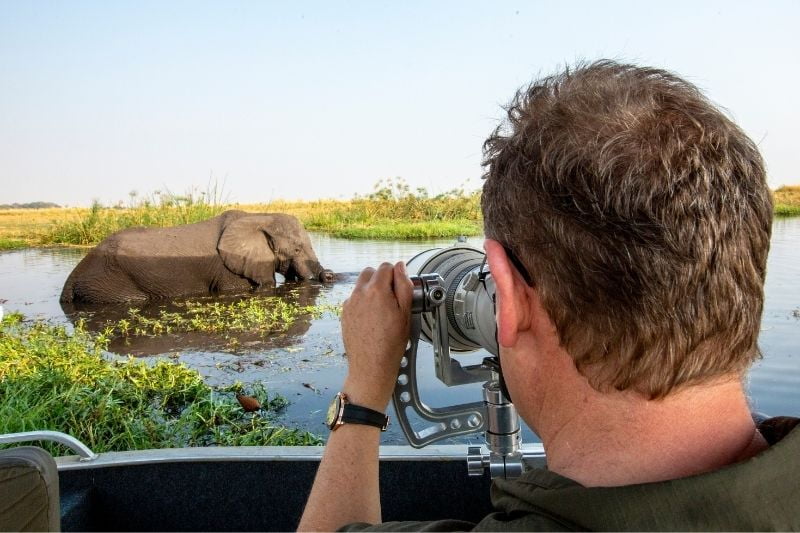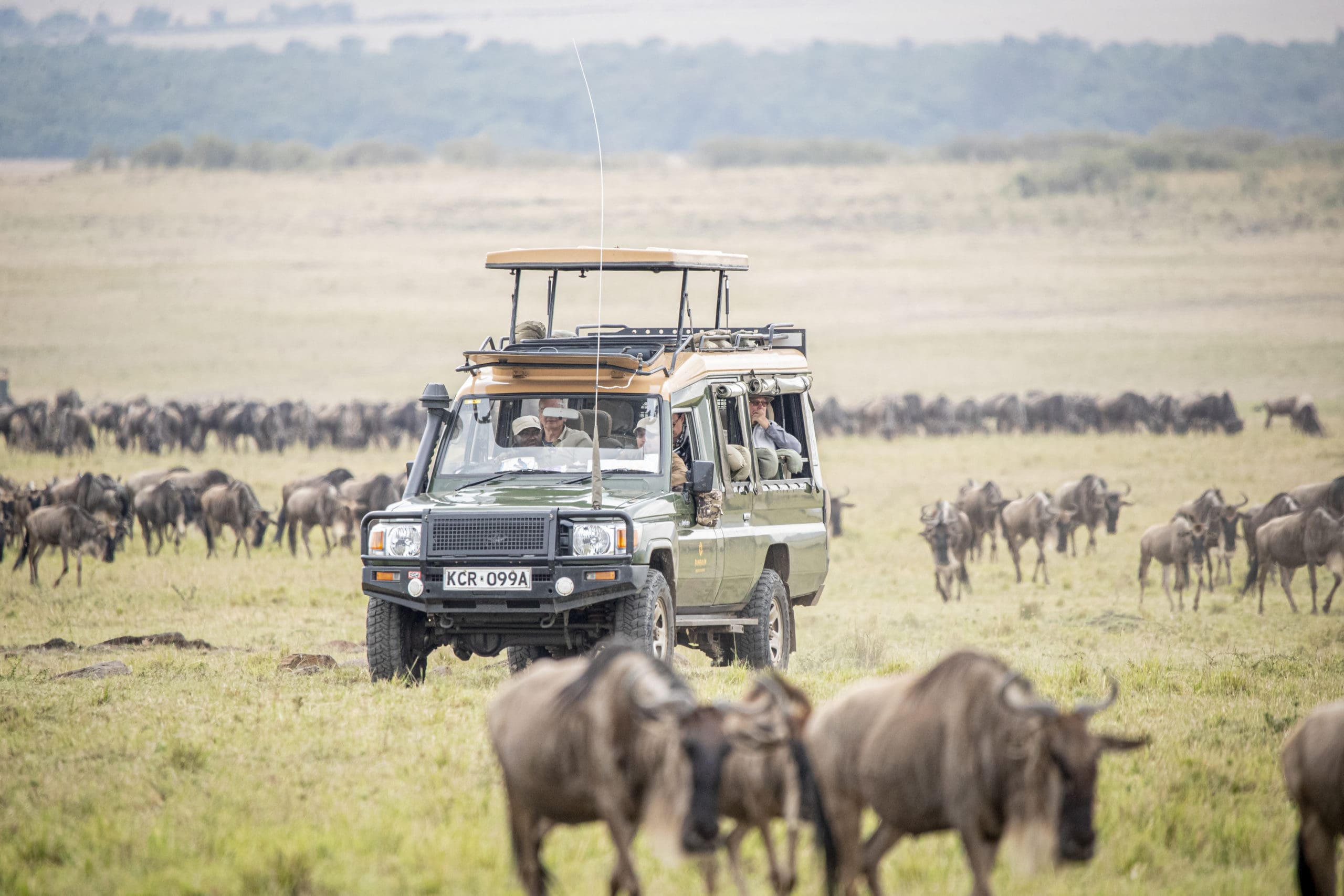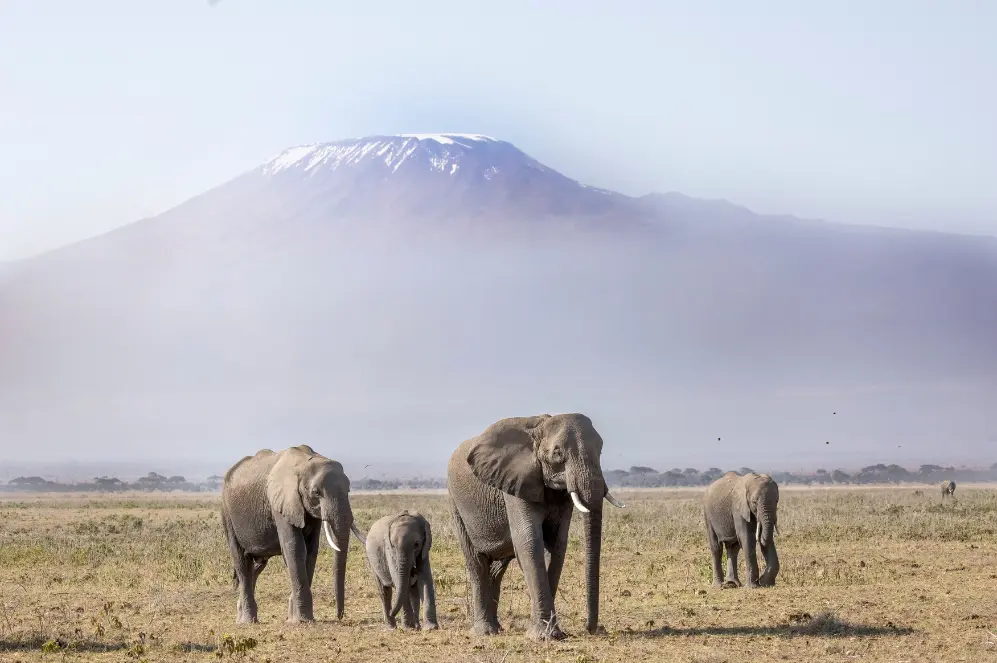Pangolin Conservation
Our contribution to saving the Four African Pangolin Species
Pangolin Photo Safaris is proud to have our own not-for-profit organisation Pangolin.Africa which is dedicated to the conservation and protection of the four African Species. Our NPO is primarily funded by our guests staying at our properties – the Pangolin Chobe Hotel and pangolin Voyager Houseboat. Every bed night contributes $5 to the funds we use for our work.
Pangolin.Africa has a three-pronged approach in which to conserve pangolins – Publicity, Participation and Protection. The Three Ps of Pangolin conservation if you like?
Publicity – Telling the world about pangolins.
It’s a sad fact that unless people who what a pangolin is they are not inclined to save it. Once they realise that the eight pangolin species are among the world’s most trafficked mammals and if left unchecked there is a serious risk of them moving from critically endangered to extinction they tend to pay attention.
We have harnessed the power of social media to release a film, on YouTube, called Eye of the Pangolin which has been seen by more than 350,000 people so far. This film tells the story of two men’s mission to find and film all four African species for the first time – Temminck’s ground pangolin, Giant ground pangolin, black-bellied pangolin and white-bellied tree pangolin. if you have not seen the film yet then please take a moment to do so by clicking on the clip below. Please do share it with as many people as possible too.
In late 2023 we will be launching an educational programme called Pangolin Champions which will aim to educate as many people as possible about the plight of these highly trafficked wild mammals as well as educate people on what (and what not) to do when they see a pangolin in the wild.
Participation – Helping the pangolin conservation scientists.
Anyone who enjoys going on safari will know that seeing a pangolin is probably the holy grail of wildlife sightings – they are that rare. We are often asked “how many pangolins remain?” and the answer is we just don’t know. Unlike rhinos, which are poached for their rhino horn, they are also renowned threatened species of wild fauna. It’s far more difficult to count pangolins due to their small size and solitary, nocturnal nature. So we cant answer that question.
What we can do though is start to build a map of where pangolin sightings are occurring and also where they have been seen historically too. To this end, we have developed a system called Pangolert where people can report their sighting confidentially and securely. This data is stored on a secure server and then distributed to wildlife authorities and pangolin conservation program directors who are protecting pangolins.
We also have a page on our Pangolin.Africa website where you can log historical sightings. Everybody remembers where they saw a pangolin. it doesn’t have to be down to the square meter but knowing the general vicinity of the African pangolins of yesteryear is important data.
Protection – How we save pangolins in peril.
Pangolins as we know are the world’s most trafficked mammal and every individual is vitally important to the survival of this highly endangered species.
Pangolins are poached from the wild for several reasons. Firstly pangolin meat has always been consumed in parts of Africa in the bush meat trade. This has always been sustainable but explosive population growth has tipped this practice into becoming a real threat to all eight pangolin species. Pangolin.Africa is designing easy-to-access educational materials to counteract the belief that pangolin. meat is a limitless resource.
We also sponsor and support a pangolin rescue and rehabilitation centre in the Northern Cape, South Africa which takes in pangolins rescued from the international trade in endangered species as well as pangolins who are sick or injured in the area.
Pangolin scales from the eight species, like rhino horn, are believed to possess specific powers in traditional medicine. The scientific consensus is that this is just not true as the main component of both is keratin- the same as fingernails. However, as long as this belief is held then the pangolin poaching crisis will remain and pangolins critically endangered.
Pangolin scales and as well as live pangolins are trafficked throughout Africa. When a live pangolin is rescued by law enforcement or wildlife authorities in the Northern Cape of South Africa then it is brought to our rehab centre to be treated and then released.
So how can you help protect pangolins?
1 – Tell as many people as you can about the plight of the eight species of pangolins.
2 – Make sure you report any new or historical pangolin sightings here.
3 – Make a donation to our organisation.
You can do this in two ways. Firstly come on safari with us knowing that every night you spend with us contributes cash directly to pangolin conservation. Alternatively, you can make a donation through our website by clicking here. No amount is too small and if you are looking to make a sizeable donation we can offer tax certificates to residents of South Africa, The USA and The UK.
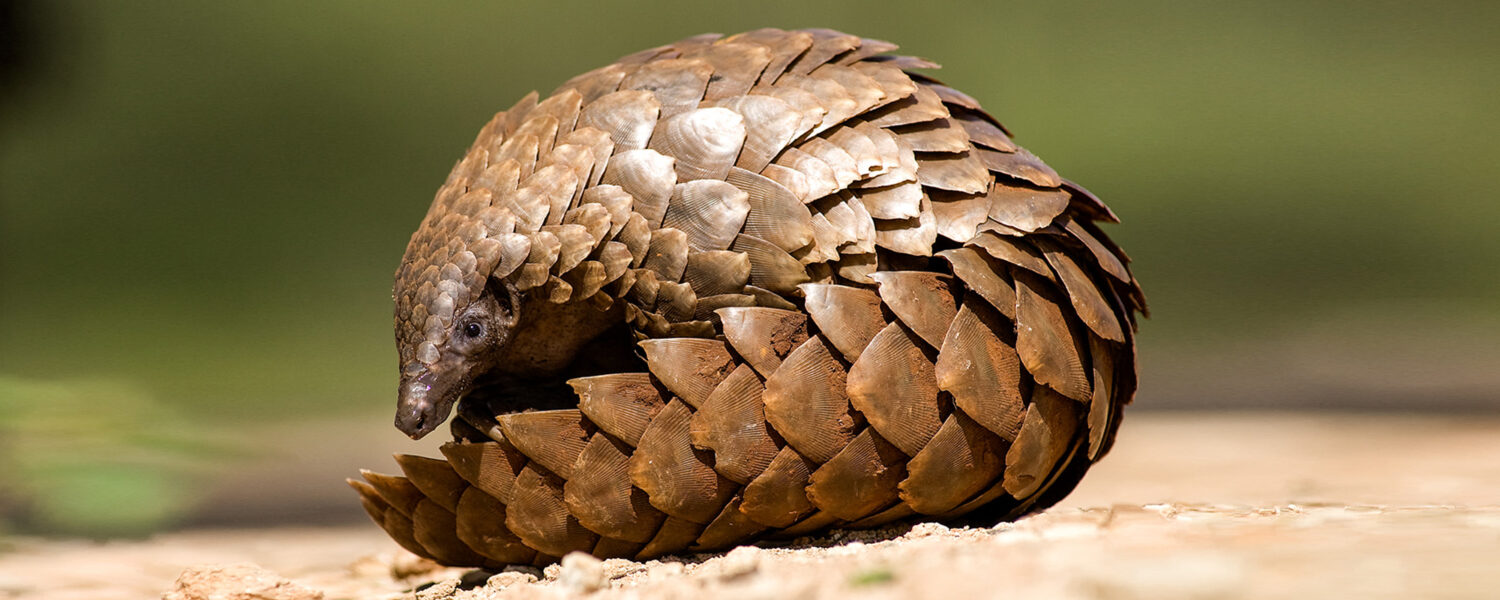
A beautiful image by Deon de Villiers who shared his encounter with us.
Can pangolins be saved from extinction?
When you watch Eye of the pangolin you will meet Rod Cassidy who rightly says that pangolin conservation has to be run by optimists because without optimists there is no hope. Pangolins can be saved from extinction if we only raise awareness of all eight species.
Learn more about the four African Pangolins
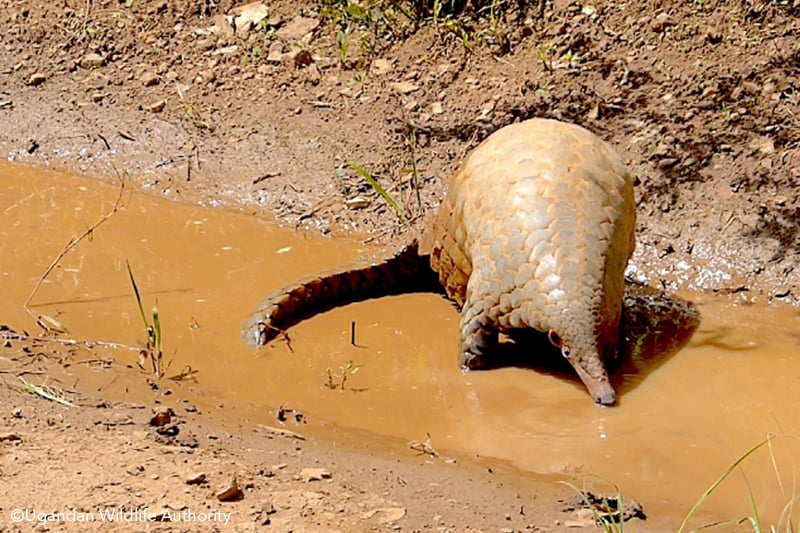
Giant Ground Pangolin
(Smutsia gigantea)
As their name would suggest, the giant ground pangolin is the largest of the four species and is a terrestrial animal. Adults can grow to 1.5m in length and can weigh up to 35kg. They are predominantly found in Central and West Africa and occasionally recorded in East Africa. They are nocturnal and very dependent on water so they tend to inhabit lowland and riparian forests, and savannah grasslands
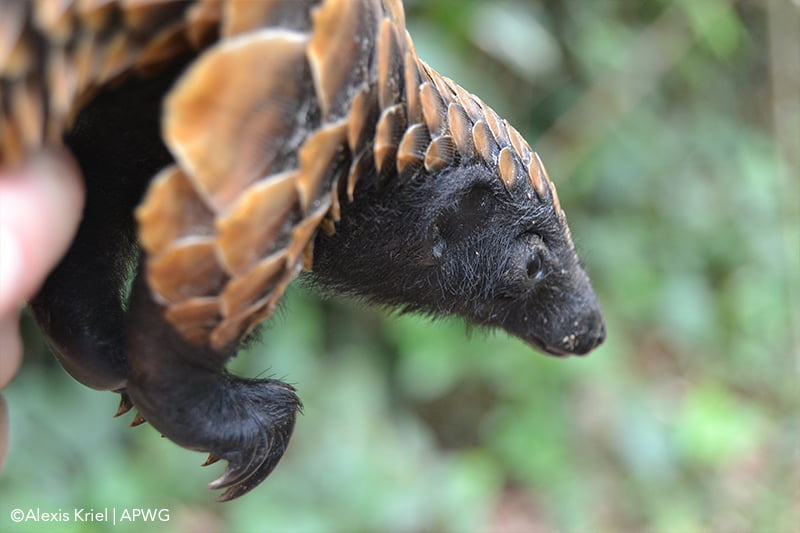
The Black-Bellied Pangolin
(Phataginus tetradactyla)
In contrast to the Giant Ground Pangolin the Black Bellied Pangolin is the smallest and lightest of the African Pangolins and some might say the most beautiful too. Weighing in at around 3kgs and a tail that long, slender and longer than its body. The Black-Bellied Pangolin spends its life in the trees. It is also a diurnal (as opposed to nocturnal) species occupying the swamp forests of Central and East Africa. The scales of this species tend to be darker, ochre in colour and larger than the others with very dark borders.
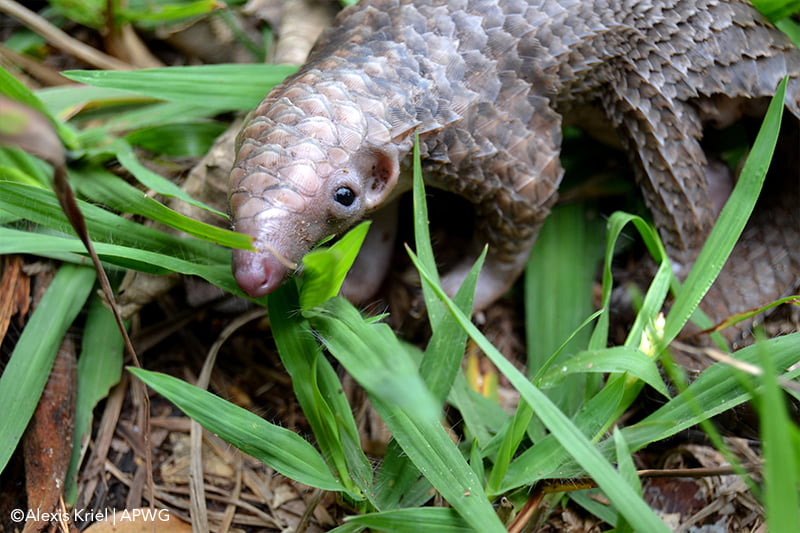
The White-Bellied Pangolin
(Phataginus tricuspis)
The Black-Bellied Pangolin is similar to the White-Bellied in size and the ratio of body to tail dimensions and is also arboreal. the scales are lighter in colour (being nearer to grey) and have three distinct points at the tip – thus the tricuspis moniker in the species name. Endemic to Central and East Africa the White-Bellied pangolin is thought to be in greater numbers and is more readily encountered than the Black-Bellied. This might also be due to its propensity to forage on the forest floor as well as in the trees.
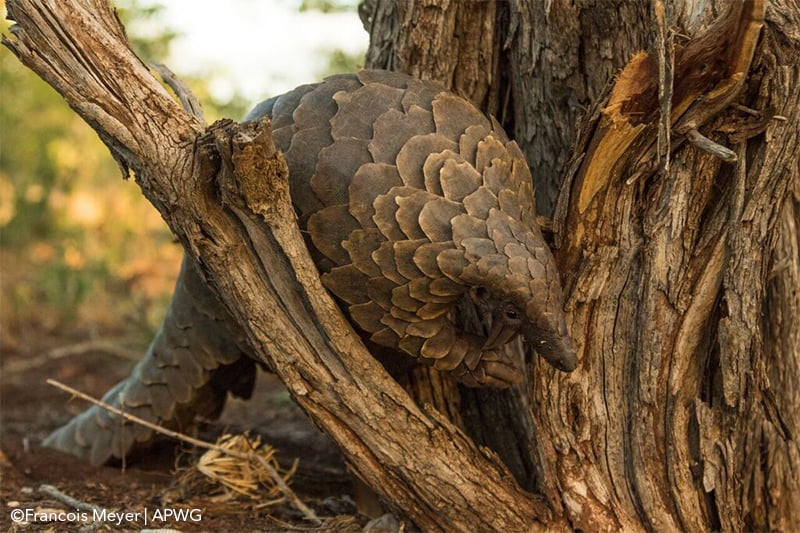
Temminck’s Ground Pangolin
(Smutsia temminckii)
They have a small head and a long, broad tail and is probably the most widespread of all the African pangolin species. They have been recorded in Southern Africa, through East Africa and as far North of South Sudan and Chad. This is the second largest species growing to around 1.2m long and 20kgs but this varies depending on the environment that individuals inhabit with smaller animals found in semi-arid areas.
Lastly which are the Asian pangolins species?
The four species of Asian pangolins are Chinese pangolin, Philippine pangolin,Sunda pangolin and Indian pangolin. They are also in dire straits with the illegal trade in endangered species in that region nearly wiping them all out. this is why the illegal wildlife trade is focused on the four African species.

